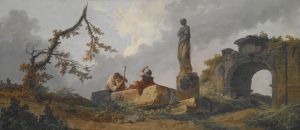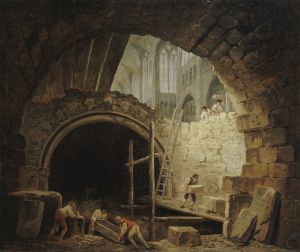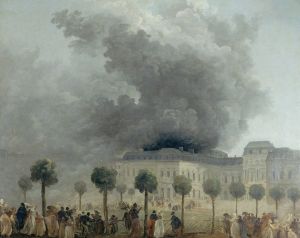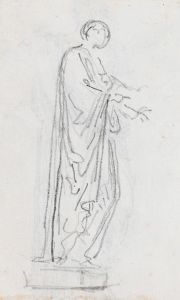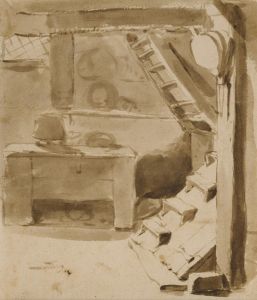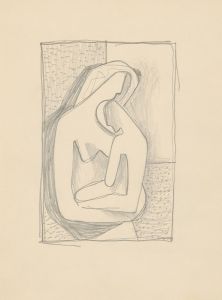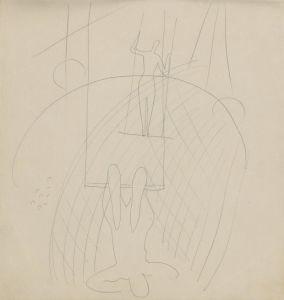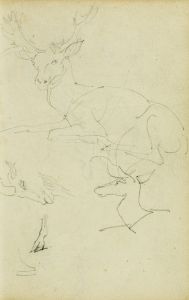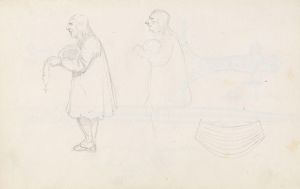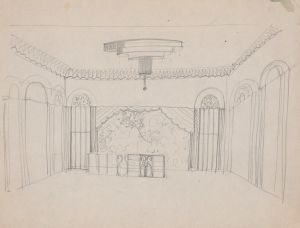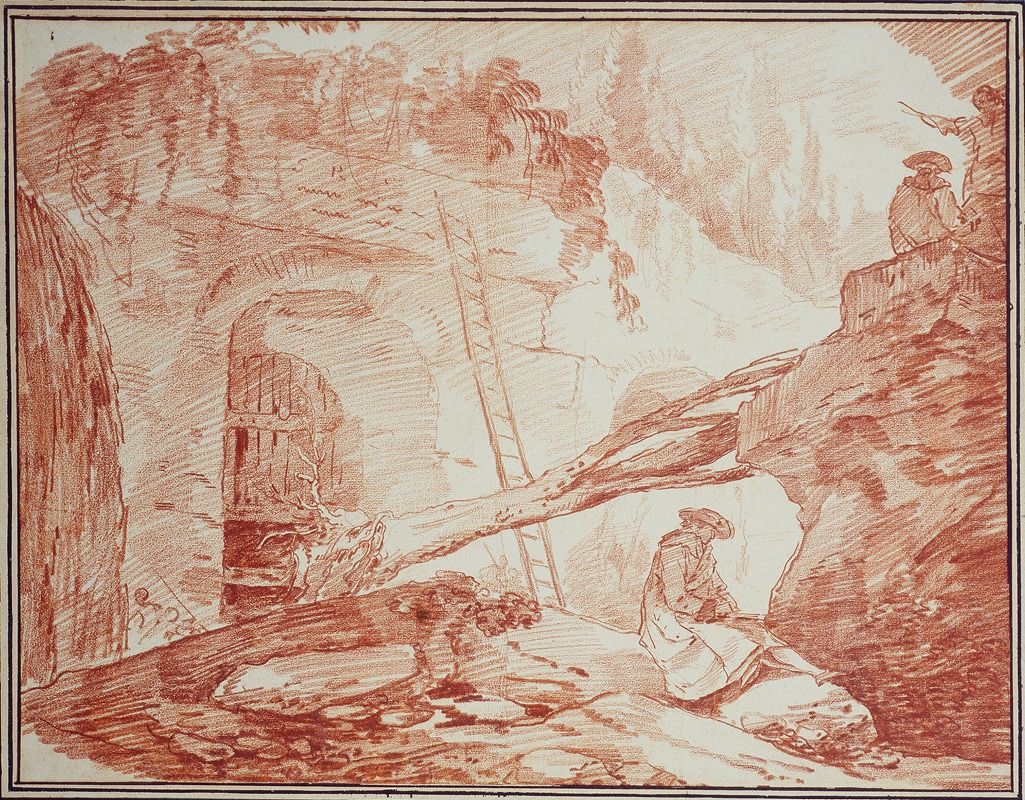
Draughtsman in the Ruins of the Palatine
A hand-painted replica of Hubert Robert’s masterpiece Draughtsman in the Ruins of the Palatine, meticulously crafted by professional artists to capture the true essence of the original. Each piece is created with museum-quality canvas and rare mineral pigments, carefully painted by experienced artists with delicate brushstrokes and rich, layered colors to perfectly recreate the texture of the original artwork. Unlike machine-printed reproductions, this hand-painted version brings the painting to life, infused with the artist’s emotions and skill in every stroke. Whether for personal collection or home decoration, it instantly elevates the artistic atmosphere of any space.
"Draughtsman in the Ruins of the Palatine" is a painting by the French artist Hubert Robert, renowned for his depictions of architectural ruins and landscapes. This work exemplifies Robert's fascination with the grandeur and decay of ancient structures, a theme that resonated strongly during the 18th century, particularly in the context of the Romantic and Neoclassical movements.
The painting portrays a draughtsman, or artist, seated amidst the ruins of the Palatine Hill in Rome, one of the most historically significant sites of the ancient Roman Empire. The Palatine Hill was home to imperial palaces and is considered the legendary birthplace of Rome. In Robert's work, the ruins are depicted with a sense of poetic grandeur, emphasizing their monumental scale and the passage of time. The draughtsman, dwarfed by the towering remnants of antiquity, serves as a focal point, highlighting the human connection to history and the act of artistic creation as a means of preserving the past.
Hubert Robert, often referred to as "Robert des Ruines" (Robert of the Ruins), was a prominent figure in 18th-century French art. He studied in Rome from 1754 to 1765 as part of the French Academy's Prix de Rome program, which deeply influenced his artistic style and subject matter. During his time in Italy, Robert developed a profound appreciation for the ruins of ancient Rome, which became a recurring motif in his works. His paintings often blend real architectural elements with imaginative compositions, creating evocative scenes that celebrate the beauty of decay and the enduring legacy of classical antiquity.
"Draughtsman in the Ruins of the Palatine" reflects Robert's skill in combining meticulous architectural detail with atmospheric effects. The interplay of light and shadow in the painting enhances the sense of depth and emphasizes the textures of the crumbling stone. The inclusion of the draughtsman underscores the role of the artist as both an observer and interpreter of history, capturing the essence of a bygone era for future generations.
While the exact date of the painting's creation is not specified, it aligns with Robert's broader body of work, which often explored themes of ruin, memory, and the sublime. His paintings were highly sought after by collectors and patrons, and his influence extended beyond his lifetime, contributing to the Romantic fascination with ruins and the picturesque.
As with many of Robert's works, "Draughtsman in the Ruins of the Palatine" invites viewers to reflect on the transience of human achievements and the enduring power of art to connect us with the past.





![Hermont [Armant], ancient Hirmonthis. Nov. 26th, 1838.](/imgs/217496/s/david-roberts-hermont-armant-ancient-hirmonthis-nov-26th-1838-3fc57e5.jpg)
